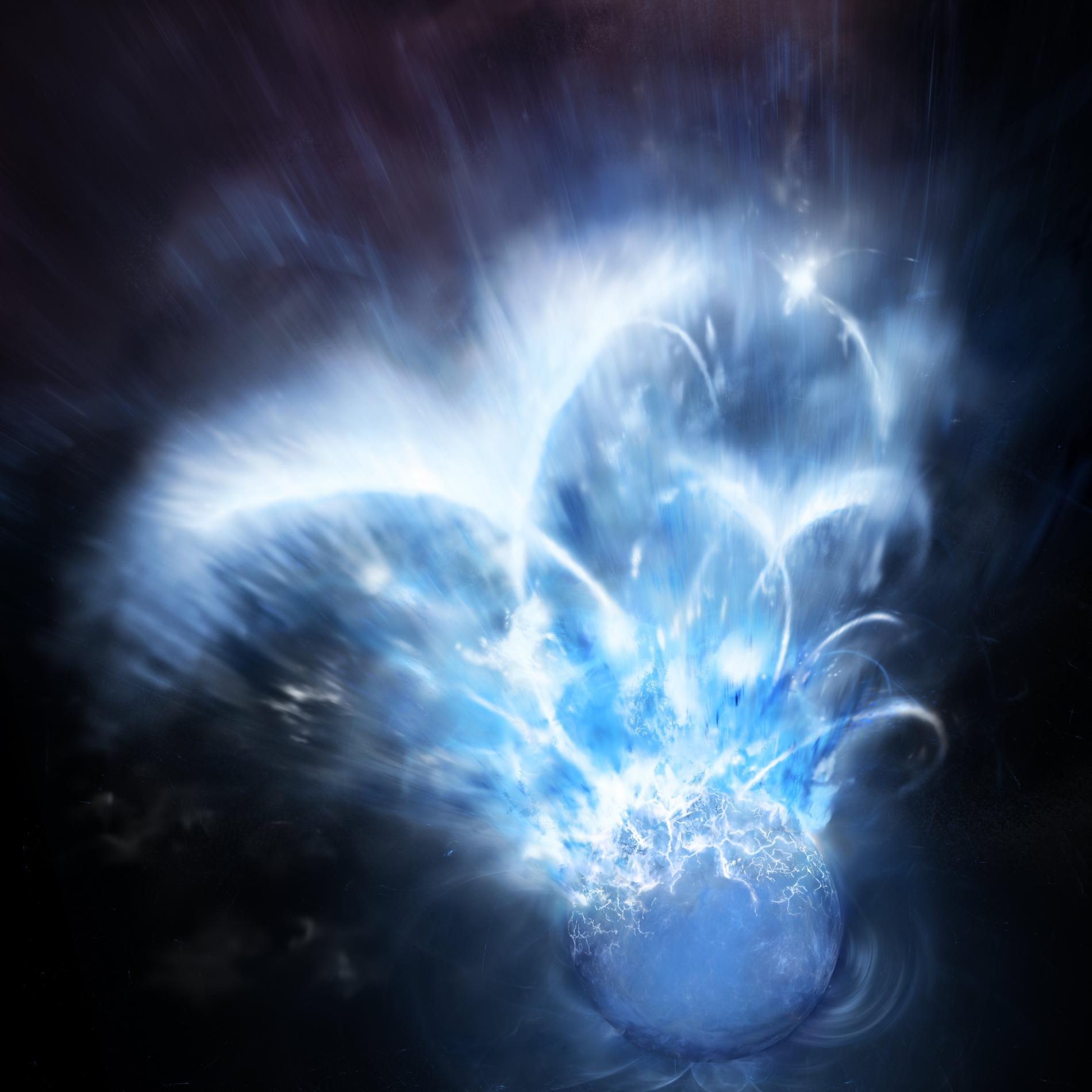Distinct pulses captured in the giant magnetic flare from a neutron star
In just a tenth of a second, a magnetar -a particularly magnetic type of neutron star- released energy equivalent to that produced by the Sun in 100,000 years. Its study in detail has revealed multiple pulses at the peak of the eruption, which will make it possible to understand these still little-known giant magnetic flares
Among the neutron stars, objects that can contain half a million times the mass of the Earth in a diameter of about twenty kilometres, a small group with the strongest known magnetic field stands out: the magnetars. These objects, of which only thirty are known, undergo violent eruptions that are still poorly understood due to their unexpected nature and their short duration of only a few tenths of a second. A scientific group led by the Institute of Astrophysics of Andalusia (IAA-CSIC) publishes today in the journal Nature the study of an eruption in detail: they have managed to measure different oscillations, or pulses, in its brightness during the moments of highest energy, which are a crucial component to understand the giant flares of magnetars.
Even in an inactive state, magnetars can be a hundred thousand times more luminous than our Sun", says Alberto J. Castro-Tirado, IAA-CSIC researcher who leads the study. But in the case of the flash we have studied, GRB200415, which occurred on 15 April 2020 and lasted only about a tenth of a second, the energy released is equivalent to the energy radiated by our Sun in a hundred thousand years. The observations revealed multiple pulses, with the first pulse appearing only around tens of microseconds, much faster than other extreme transients.
Eruptions in magnetars are thought to be due to instabilities in their magnetosphere or to a kind of "earthquake" in their crust, a rigid, elastic layer about a kilometre thick. "Regardless of the trigger, a type of waves will be created in the star's magnetosphere, the Alfvén waves, which are well known in the Sun and which, while bouncing back and forth between the points at the base of its magnetic field lines, interact with each other and dissipate energy", says Alberto J. Castro-Tirado (IAA-CSIC).

The oscillations detected in the eruption are consistent with the emission produced by the interaction between Alfvén waves, whose energy is rapidly absorbed by the crust. Thus, in a few milliseconds the magnetic reconnection process ends and, therefore, so do the pulses detected in GRB200415, which disappeared 3.5 milliseconds after the main outburst. Analysis of the phenomenon has allowed us to estimate that the volume of the flare was similar to or even larger than that of the neutron star itself.
The flare was detected by the ASIM instrument on board the International Space Station, which was the only one out of seven that was able to record the main phase of the flare in its full energy range without saturation. The science team was able to resolve the temporal structure of the event, a truly complex task that involved more than a year of analysis for one second of data.
"The detection of quasi-periodic oscillations in GRB200415 has been challenging from a signal analysis point of view. The difficulty lies in the shortness of the signal, whose amplitude decays rapidly and is embedded in the background noise. And, being correlated noise, it is difficult to distinguish the signal from the noise. We owe this achievement to the sophisticated data analysis techniques that have been applied independently by the different members of the team, but it is also undoubtedly a technological achievement due to the excellent quality of the data provided by the ASIM instrument on board the International Space Station", says Javier Pascual, a researcher at IAA-CSIC who participated in the work.
These flares had been detected in two of the thirty known magnetars in our galaxy, the Milky Way, but also in two others located in other galaxies. GRB2001415 would be the most distant magnetar flare captured to date, being located in the Sculptor group of galaxies about thirteen million light-years away.
"This flare has provided a crucial component in understanding how magnetic stresses are produced in and around a neutron star. Continuous monitoring of magnetars in nearby galaxies will help to understand this phenomenon, and will also pave the way to learn more about fast radio bursts, currently one of the most enigmatic phenomena in astronomy," concludes Alberto J. Castro-Tirado (IAA-CSIC).
The work also involves researchers from the universities of Valencia, Cádiz and Málaga, using data from the BOOTES robotic telescope network (led by Castro-Tirado) and the Gran Telescopio Canarias.
A. J. Castro-Tirado et al. "Very-high-frequency oscillations in the main peak of a magnetar giant flare". Nature, Dec 2021.
Instituto de Astrofísica de Andalucía (IAA-CSIC)
Unidad de Divulgación y Comunicación
Silbia López de Lacalle - sll[arroba]iaa.es - 958230676
https://www.iaa.csic.es
https://divulgacion.iaa.csic.es

